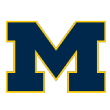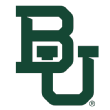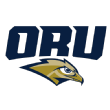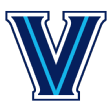It's been far from a chalky men's NCAA tournament, but there are still some favorites remaining in the March Madness field. Gonzaga and Baylor, the two pre-tourney choices, are still alive, as is a third 1-seed in Michigan.
Will the upsets continue or will the top seeds prevail? I reached out to coaches who have faced the four regional favorites to find out which team in each poses the biggest challenge.

Gonzaga Bulldogs
Potential pitfall: Oregon or USC
Why: "It's hard to choose between Oregon and USC. USC's size is different. It's a different size that Gonzaga hasn't really seen yet. They saw the big kid at BYU [Matt Haarms], but USC has length and athleticism at the 3, 4, 5. Drew Peterson is 6-foot-8, Isaiah Mobley is 6-foot-10, Evan Mobley is 7-foot. Oregon is not as tall, but they're strong, and they switch. They play zone a lot too.
"USC's issue is going to be when [Corey] Kispert is at the 4: How do you guard that? They have to make a decision with a bigger guy. USC has a zone too, which is interesting, and the zone looks very good right now. Oregon's physicality, their ability to switch [is challenging]. The issue with USC is they have moments where their offense has struggled. Oregon, to me, they can shoot. They're inside-out; they're consistent with that. They play their zone; they switch a ton. Both can pose issues in different ways.
"The size up front with USC scares people. Evan Mobley can contest shots. Even Max Agbonkpolo, Chevez Goodwin have looked good in the zone. It's a lot of length and a lot of hands. Gonzaga torches you in transition -- layup, layup, layup. If Gonzaga gets out in transition, that's problematic for USC because they're gonna play two bigger guys. They put that heat on you in transition. I think Evan Mobley poses problems for Drew Timme. Timme has unbelievable footwork, uses the baseline so well. But Mobley's ability to contest two shots in one possession is incredible. It'll be interesting." -- WCC assistant coach

Michigan Wolverines
Potential pitfall: Alabama
Why: Because the East Region is the most loaded left in the field, I asked a trio of coaches. Two said the Crimson Tide were the toughest matchup left for the Wolverines. "They can pull [Austin] Davis and [Hunter] Dickinson away from the basket and potentially take them off the floor," one opposing coach said of the Wolverines. "[Mike] Smith really struggled with the length and athleticism of the LSU defense, and I think Alabama can present the same kind of issues for him. Alabama has a more high-powered offense than Florida State. Michigan can put Florida State into a grinder. I don't think Michigan can go basket for basket with Bama without [Isaiah] Livers and potentially limited impact from Dickinson. Bama would have to make 3s, obviously, but if they do, that's a problem for Michigan."

Baylor Bears
Potential pitfall: Arkansas
Why: "[Arkansas] can really score at a high level. They've got shooters, and they make 3s. Teams beat Baylor from the perimeter. You have to get hot; you have to be able to make 3s. Get them in defensive help situations and make 3s. [The Bears] create turnovers with their collapsing defense; you have to be able to jump stop and kick out for 3s -- and then make the 3s. I don't think their lack of a post scorer would hurt them.
"Baylor might go small; [Mark] Vital could play the 5. But spreading them out hurts them more than trying to post. Drive and kick, put them in ball screens; that's what's worked against them in the past. Arkansas can beat them. They can score in different ways. They take a lot of 3s. The stuff in the NCAA tournament, the margins are so small, and they're capable of ringing up some 3s. And they can rebound defensively, keep Baylor off the glass." -- Big 12 assistant coach

Houston Cougars
Potential pitfall: Syracuse
Why: "Houston keeps it real simple against the zone offensively. They rely on their guys to fire 3s and try to go rebound the misses. If [Marcus] Sasser and [Quentin] Grimes struggle from the outside, Syracuse is a problem. Look at the Houston game at Tulsa from this season. Tulsa plays a matchup zone all game. [Houston's first loss of the season was at Tulsa in late December; the Cougars shot 4-for-21 from 3-point range. It was the last time Houston scored fewer than one point per possession.] Sasser's been cold the last couple weeks; Grimes has been carrying them. Loyola is so on point, both offensively and defensively, but Houston is just so physical and tough, I imagine they will try and trap the big boy [Cameron Krutwig] and try to overpower them a little. Syracuse would be my pick of the three." -- AAC assistant coach
Is Baylor back?
Baylor's "edge" was maybe the biggest X factor entering the NCAA tournament: If the Bears played with the energy and aggression they had before going on a COVID-19 pause in February, they were in the conversation with Gonzaga for the best team in the country; if they continued to play like they did since returning from the pause, they could lose well before the Final Four.
Well, the Bears blew out Hartford and handled Wisconsin fairly easily in the first two rounds this weekend. Are they back?
"They were clicking," one Big 12 coach said. "It was pre-COVID Baylor."
That's a good sign for the Bears, who started the season 17-0 before taking a three-week break. They came back and struggled at home against Iowa State, before losing their first game of the season at Kansas. Three solid wins followed, but they were bounced in the Big 12 semifinals by Oklahoma State.
Baylor looked completely different in the first two games of the NCAA tournament.
"It's connectivity -- offensive and defensive connectivity. Sacrificing and playing for each other. Playing with an edge," an opposing coach said. "Those three guards get going, then Matt Mayer comes in and hits a few 3s, he gets going. That's pre-pause Baylor. The connectivity between those three guards, they have great synergy. The one dribble, quick kick. Any one of them can get you. We've been beaten by all of them."
Defensively, Baylor was playing with far more energy against Wisconsin. The Bears' closeouts and rotation were quicker and crisper, and they were playing with more aggressiveness than they had in a couple of weeks.
"They're a really, really good defensive team. They're in the gaps, getting steals, creating transition off their defense," a Big 12 coach said. "[Jonathan] Tchamwa Tchatchoua protecting the rim at a high level. If they can create offense off their defense, they're really tough."
One of the issues late in the season was the lack of production from Baylor's supporting cast. Mayer and Adam Flagler were struggling, Tchamwa Tchatchoua wasn't making the same impact he was earlier in the season. Against Wisconsin, Mayer had 17 points and six rebounds, and Flagler hit a 3 and a few free throws; but Tchamwa Tchatchoua could be the key to get this team to the Final Four.
"Tchamwa Tchatchoua is really important," an opposing coach said. "He anchors the defense, sprints in and out of ball screens, forces tags and rotations -- and when you do that, they kick out for 3s, it puts you in rotation. Defensively, he protects the rim at a high level and rebounds and runs the floor."

Can Loyola Chicago get back to the Final Four?
It has been widely accepted that this season's version of Loyola Chicago is better than the one that made the Final Four in 2018. And after the Ramblers knocked off 1-seed Illinois and the rest of the Midwest Region opened up, they have a great shot at getting back to the national semifinals.
There are a few holdovers from that 2018 team still playing for Porter Moser, but the biggest key is Cameron Krutwig. Krutwig is a 6-foot-9 center who creates nightmare matchups for opponents due to his unique skill set and basketball instincts.
"You have to realize how special of a player Cameron Krutwig is," one opposing coach said. "People don't realize how good he is. I know he made third-team All-American -- he's a first-team All-American. There's no doubt in my mind. When you got a guy like that, it makes everyone better. He's so smart, he's so skilled, he's tough. He's as smart of a basketball player as I've ever seen."
One coach pointed out a stat mentioned often in the Missouri Valley Conference: Krutwig is the fourth MVC player to record 1,500 points, 800 rebounds and 300 assists -- joining Oscar Robertson, Larry Bird and Hersey Hawkins. Decent company.
"Krutwig is a point guard in a center's body," a league coach said. "I call him the best point guard in the country. When people come out on the court to guard him, he just picks you apart. They're always playing with two point guards because Krutwig is a point guard. People have had success in the past with making him a scorer because, instinctively, his first thing is to pass. But this year, if you want to make him a scorer, he'll score 25. He's just hard to guard. He's just that good. He's so smart, man. Those bounce passes. High-major point guards can't make those passes."
Loyola Chicago also has the top-ranked defense in the country, according to adjusted defensive efficiency at KenPom. The Ramblers rank in the top 10 nationally in defensive rebounding percentage and defensive foul rate, and they also led the MVC in 2-point defense and defensive turnover percentage.
"They've got three elite defenders: Braden Norris, Lucas Williamson and Aher Uguak," one coach said. "Those guys can guard any perimeter player in America. They don't need help; they just guard you. The 'all-defense' team in our league should have just been Loyola. The communication and IQ of Krutwig just sets them apart. They understand what they're willing to live with. They take away your two best options. They're very connected, but a lot of it has to do with Krutwig. He's so smart. It's just rare that you have that many guys so gifted defensively. They do a great job with their scheme, but you still gotta execute it. They never foul because they play vertical all the time. They never break the plane. It's always through their body."
One opposing coach said the biggest difference between this season's team and last season's group is the addition of Norris, the Oakland transfer who starts at the point.
"He's made them elite. He's an elite defender. An Aaron Craft type," he said of Norris. "Keith Clemons and Marquise Kennedy, now they don't have to handle the ball. Last year, they played point guard. Now, they don't have to play point guard. They're scorers; they play off the ball. Norris was added onto their team, a team that didn't lose anybody. His defense, his grittiness, and he can bail them out of a ball screen."

Dana Altman's success in March
Jim Boeheim gets a lot of credit for his success in March, but Dana Altman's performance in the NCAA tournament since arriving at Oregon doesn't get nearly enough attention. The Ducks have been to seven of the past eight NCAA tournaments; they have won at least one game in all seven of those tournaments and are now in their fifth Sweet 16 during that span. Altman is 14-6 in the NCAA tournament at Oregon, with five Sweet 16 appearances and zero first-round losses. He also has a Final Four on his résumé.
What is it about Altman and Oregon come tournament time?
"It's almost like Syracuse. His matchup zone is a problem for people. It scares people," one longtime Pac-12 coach said. "The teams that struggle in March, they overthink things. They're trying to figure it out on the fly. Oregon is strong. They move laterally defensively. They get to places quickly. A lot of it defensively is that zone. And he's elite in adjusting how he plays to the caliber of player he has in any given year. Doesn't do the same thing. There's similar concepts, but he coaches to players' strengths. He's an amazing tactician."
The zone has worked wonders in past NCAA tournaments. When the Ducks made the Sweet 16 run as a 12-seed in 2019, their defense caused real problems for Wisconsin and UC Irvine, and it even held Virginia below one point per possession in the regional semifinal defeat.
"It seems to get better throughout the course of every year, from start to finish," an opposing coach said. "There's times teams go up to Oregon and they just don't know what to do. They're great at communicating, they're multidimensional, they have guys that can guard five positions, they're strong and they can all rebound. You're not going to be confident going in there."

Why is Syracuse difficult to beat in March?
It's an annual running joke that the NCAA tournament bubble isn't complete without Syracuse, since the Orange seemingly always find themselves right on the cut line down the stretch of the regular season. But the trend has been taken a step further in recent years, as Jim Boeheim's teams sneak into the Big Dance and then win multiple games. In three of the past five NCAA tournaments, the Orange have received a double-digit seed and then advanced to the Sweet 16 -- including a Final Four run as a 10-seed in 2016.
What is it about Syracuse's style that makes it so difficult to take down in the NCAA tournament? It all starts with the 2-3 zone.
"It's the quick turnaround, and it's not your typical 2-3 zone in terms of the way they play it," one longtime ACC coach said. "The size that they have, the activity, the aggressiveness, the ability to steal the ball out of the zone, they're very, very good at it. You might play a team in the first round that plays man, now you're going against this zone on a quick turnaround. And you can't run your regular zone offense, it's different. That's a big part of it. The way they play it, it's more of a 2-2-1 almost. The corners look open, but when you throw it to the corner, they've got good size and will trap it. Is he skilled enough to get it out there? It's not guaranteed you're going to have a guy big enough in that corner to get it out."
ACC teams have had success against the zone in recent years, and even this season, the Orange ranked just eighth in the league in defensive efficiency. How do teams in the league beat it?
"Historically, one of the best teams to do it against them was Pitt with Jamie Dixon," one coach said. "They offensive rebounded it so well, they were a good interior passing team. When you dive in the middle, you talk about someone who is versatile in the middle of that thing. Someone who can shoot, pass, dribble. Guys who can make plays. It makes a lot of sense that Jamie's teams were good against it; they've historically been a very good passing team. Syracuse is going to make you make some plays against the zone, some passing plays, some difficult ones. A team good at that would have an advantage."
"People do ball-screen a good bit; that's been good at times," another coach added. "Trying to get inside and engage the center is something you hear a lot about. Sometimes people post the center, run [the] 'horns' [offensive set] and step-up screens on the outside and go back inside to see if you can get the center to play the ball."
Syracuse also has received elite production from Buddy Boeheim over the past few weeks. In four postseason games this month, including two games in the ACC tournament, he is averaging 28.3 points and shooting 55.8% from 3-point range.
"They play with a tremendous amount of freedom and confidence," an ACC coach said. "In Buddy's case, he's got tremendous size. He can get his shot off on almost anybody. High release. He's obviously really good and kind of a clever player in terms of shot-faking, using his shooting ability to create space. Using his size to create space. He's not a terrible dribbler. He's good at putting it down a couple times, getting to his spot and raising up. He uses his size to play off two feet in the paint. Little bit of an old-school game in that way."

Max Abmas, Kevin Obanor have Oral Roberts rolling
The biggest underdog story of an upset-laden Sweet 16 is Oral Roberts, a 15-seed that finished fourth in the Summit League this season. The Golden Eagles won three games in three days to take the conference tournament title, then knocked off No. 2 Ohio State and No. 7 Florida in the first two rounds of the NCAA tournament.
Golden Eagles 6-foot-1 guard Max Abmas and 6-foot-8 big Kevin Obanor have become two of the stars of the Dance, with Abmas -- the nation's leading scorer -- totaling 55 points in two games and Obanor going for 58. Neither player came off the floor in either game.
"Abmas is so fast," one Summit coach said. "A lot of guys with speed don't play with great pace. But he has hesitations, and you have to respect him pulling up every time. He's great at hesitation dribbles. I don't care who he plays, he's the fastest player on the court. The guy doesn't sweat. Literally. He plays the game pretty easy. I think the biggest thing he's done, starting in the conference tournament, he's starting to get assists, too. That really, really changes their team. That makes them really, really, really hard to guard.
"Obanor has got the ability to take advantage of switches if you go little with him. They space it around him, open up the post for him. If you go two [defenders] to the ball, he feels so good about it right now, not thinking about, he's just catching and shooting. Our league tried everything with him, and you get this late in the season, they've seen everything. You're not really going to trick him, just better be solid."
On the season, Paul Mills' team ranked in the mid-200s in adjusted defensive efficiency -- but it held Ohio State to 0.93 points per possession and limited the Buckeyes and Florida to a combined 12-for-45 from 3-point range.
"They are really connected defensively," an opposing coach said. "They're kind of picking where they can give a little, and those other teams haven't been able to expose that yet. Abmas was going under ball screens, so they didn't get in scramble situations against Florida. It's worked well. And then the two unsung guys, Kareem Thompson and Carlos Jurgens, are doing a really, really good job of just guarding their guy."
Can the Golden Eagles beat Arkansas and keep the upset train rolling?
"Arkansas might have gotten away with one against Texas Tech. Their shot selection, holy cow," one coach said. "[Razorbacks coach Eric] Musselman will do everything in his power to take Max and Kevin out. He'll do it by switching. My guess is they'll switch every single ball screen that Max uses. That was our best bet against them. Switch against them, put it on the floor and challenge on the rim. Defensively, they really push it down on the sideline and try to keep the ball from going middle. It's a little bit Texas Tech-ish, no middle -- but not quite to that extent. If your team is willing to pass, you can beat them. But if you drive the ball, you're driving into traffic."

Villanova adjusts without Collin Gillespie
Villanova was a prime upset pick in the first round of the NCAA tournament, with the Wildcats having dropped two in a row since star point guard Collin Gillespie was lost for the season with a torn MCL. They also drew a popular 12-seed in one-loss Winthrop.
But the Wildcats ended up beating the Eagles by 10, then pummeled 13-seed North Texas in the second round 84-61.
"Justin Moore spraining his ankle in the first half of the Providence game hurt them," one Big East coach said of Villanova's two late-season losses. "And he didn't look to be at full strength in the Big East tournament against Georgetown. Getting him healthy and playing well is obviously a boost."
Jeremiah Robinson-Earl has become the fulcrum of Jay Wright's offense. He had 22 points, 11 rebounds, six assists and three blocks in the win over Winthrop, then followed that up with 18 points, six boards and another six assists against the Mean Green.
"I think it took them a few games to be comfortable on the offensive end," an opposing coach said. "They were so pick-and-roll heavy with Gillespie. They're doing a good job popping the ball around the last two games."
My revised picks
Like most people, my bracket is a mess. I nailed North Texas over Purdue and Oregon over Iowa, but that's about it.
My national champion (Gonzaga) and title game (Gonzaga vs. Baylor) are still intact, and I'm sticking with that moving forward.
In the West Regional, I'll go with Gonzaga over Oregon. The Pac-12 battle between the Ducks and USC is an offense vs. defense special, but I think Oregon's shooting from the second round is a bit more sustainable. In the East, give me Florida State over Alabama. Michigan looks very good without Isaiah Livers, and Alabama is unbeatable when it's hitting 3s, but I just love the way the Seminoles are playing right now.
I'll stick with Baylor beating Arkansas in the South. And then in the Midwest, I'm hopping on the Loyola Chicago bandwagon. Two Final Fours in four years for the Ramblers after beating Houston in the Elite Eight.
